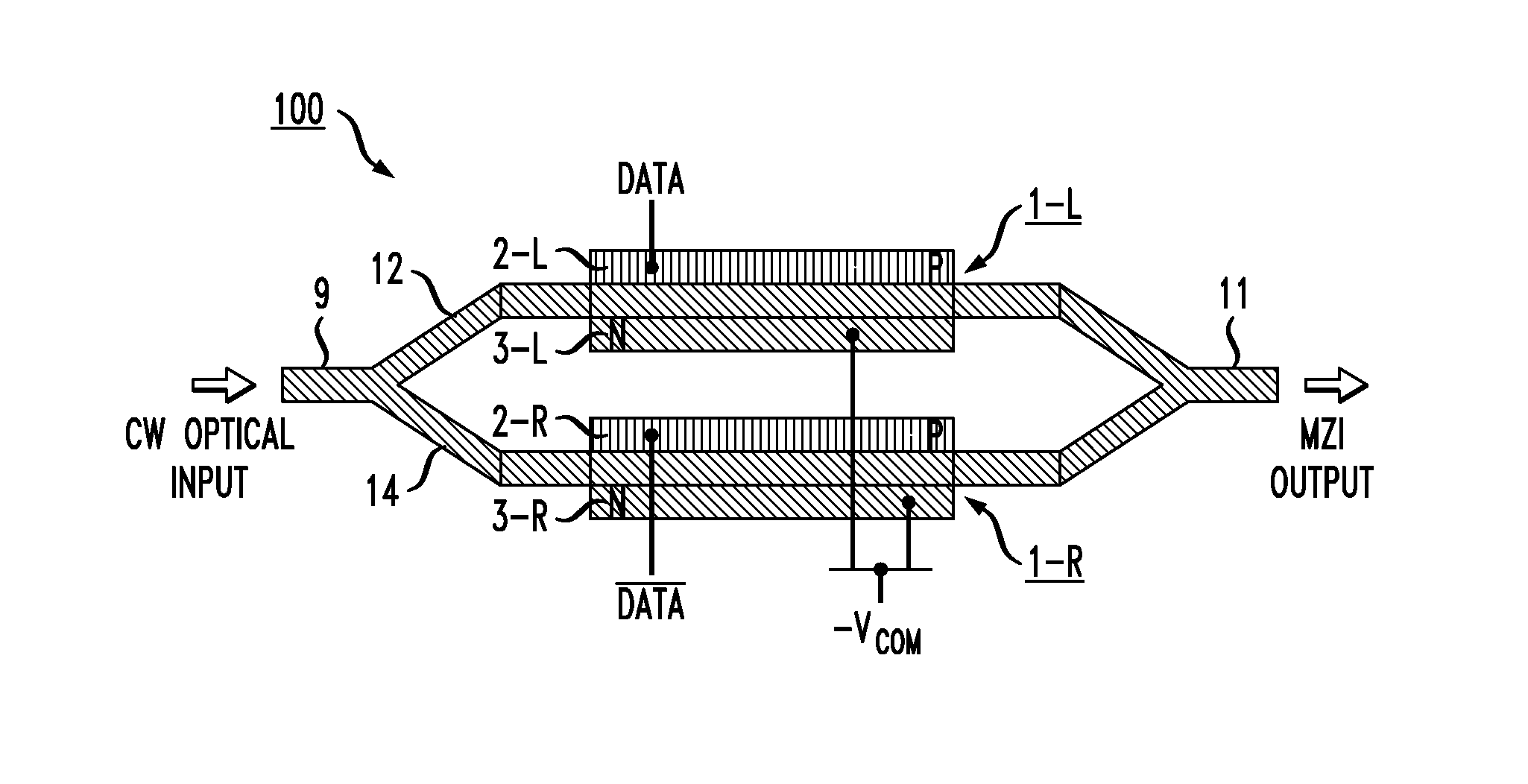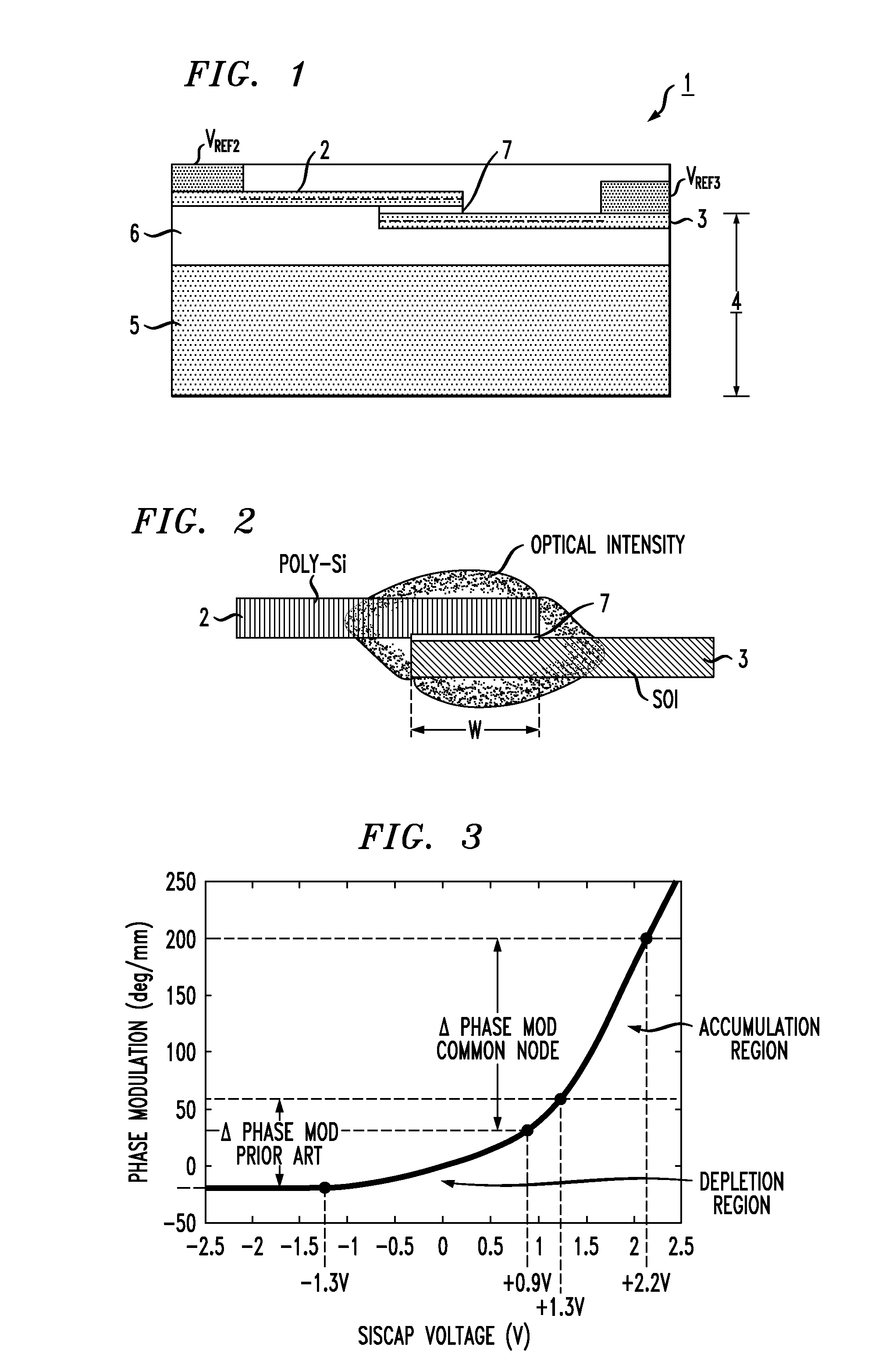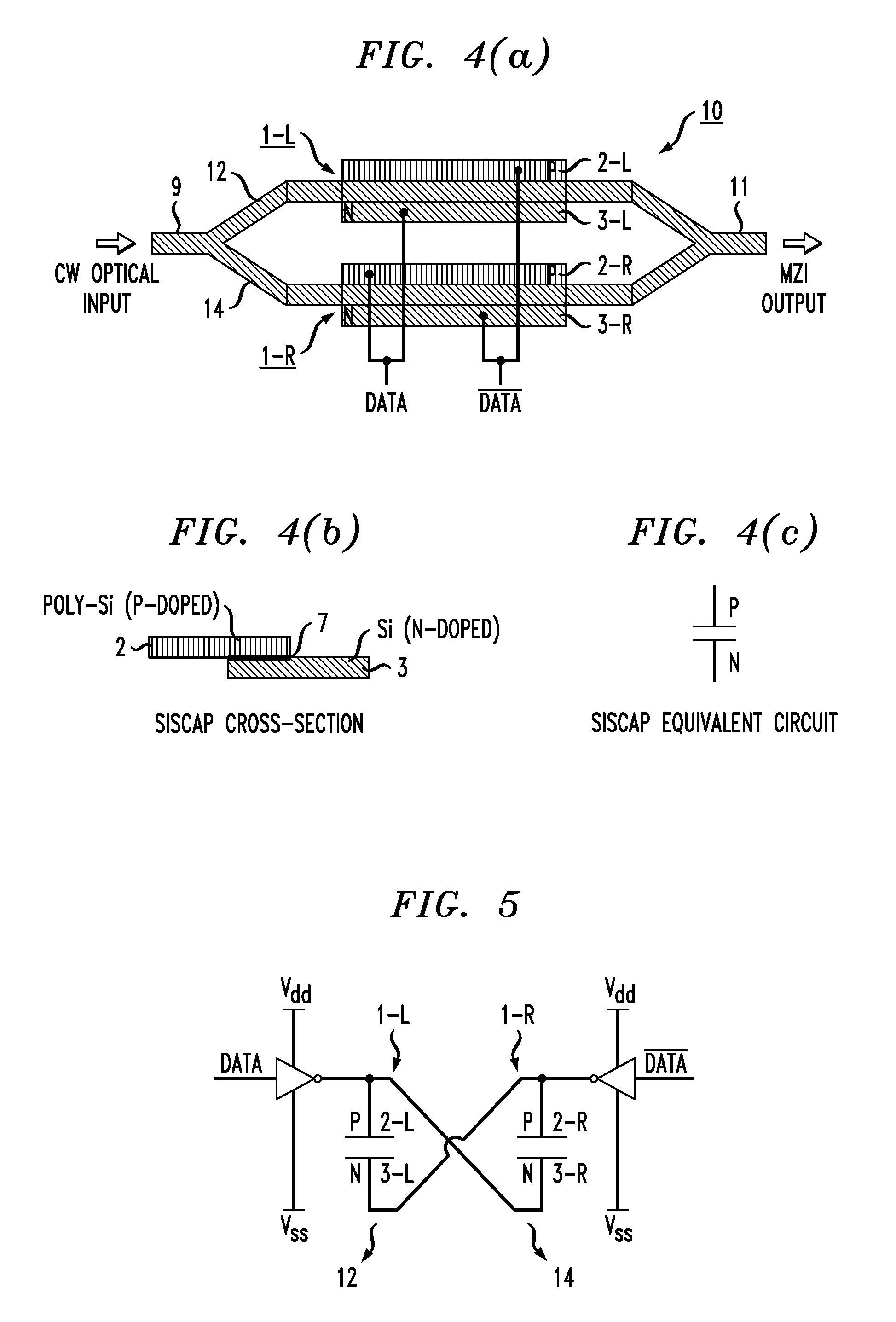Silicon-Based Optical Modulator With Improved Efficiency And Chirp Control
a technology of optical modulators and silicon-based optical devices, which is applied in the field can solve the problems of silicon-based optical modulators in general, known to suffer from chirp, and the use of lithium niobate-based optical devices in such situations is not an option, so as to improve the modulation efficiency and control of chirp, and improve the extinction ratio. , the effect of a larger optical modulation amplitud
- Summary
- Abstract
- Description
- Claims
- Application Information
AI Technical Summary
Benefits of technology
Problems solved by technology
Method used
Image
Examples
Embodiment Construction
[0034]Prior to describing the utilization of “common node” biasing for improved modulation efficiency and chirp control in a silicon-based optical modulator, it is considered helpful to provide an understanding of the operation of a prior art silicon-based optical modulator in greater detail. FIG. 4(a) is a simplified block diagram of an exemplary prior art Mach Zehnder Interferometer (MZI) 10 comprising an input waveguide section 9 that splits into a pair of separate, parallel waveguiding arms 12 and 14. The opposite ends of waveguiding arms 12 and 14 are thereafter re-combined to form an output waveguide section 11. As shown, waveguiding arms 12 and 14 each contain a silicon-based phase modulating device 1 as discussed above in association with FIG. 1. In particular, waveguiding arm 12 contains a modulating device 1-L (comprising a polysilicon region 2-L and SOI region 3-L), and waveguiding arm 14 contains a modulating device 1-R (comprising a polysilicon region 2-R and SOI region...
PUM
 Login to View More
Login to View More Abstract
Description
Claims
Application Information
 Login to View More
Login to View More - R&D
- Intellectual Property
- Life Sciences
- Materials
- Tech Scout
- Unparalleled Data Quality
- Higher Quality Content
- 60% Fewer Hallucinations
Browse by: Latest US Patents, China's latest patents, Technical Efficacy Thesaurus, Application Domain, Technology Topic, Popular Technical Reports.
© 2025 PatSnap. All rights reserved.Legal|Privacy policy|Modern Slavery Act Transparency Statement|Sitemap|About US| Contact US: help@patsnap.com



